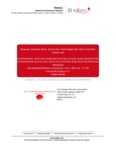Please use this identifier to cite or link to this item:
http://www.alice.cnptia.embrapa.br/alice/handle/doc/920416| Title: | Earthworms, ants and other arthropods as soil health indicators in traditional and no-fire agro-ecosystems from Eastern brazilian Amazonia. |
| Authors: | ROUSSEAU, G. X.  SILVA, P. R. dos S.   CARVALHO, C. J. R. de   |
| Affiliation: | GUILHERME XAVIER ROUSSEAU, UEMA; PAUL OROGÉRIO DOS SANTOS SILVA, UEMA; CLAUDIO JOSE REIS DE CARVALHO, CPATU. |
| Date Issued: | 2010 |
| Citation: | Acta Zoologica Mexicana (nueva serie), v. 26, n. esp. 2, p. 117-134, 2010. |
| Description: | Deforestation of the Amazonian rainforest and conversion to agriculture with the use of fire creates a mosaic of occupied lands and secondary forests. Considering the fundamental role of soil macrofauna and the lack of information about its resilience to deforestation, this study characterized the earthworms, ants and other soil arthropod communities in secondary forests of 40 and 20 years of age and in cropping system and pastures prepared with slash-and-burn or chop-and-mulch in the Brazilian Eastern Amazonia. Soil macrofauna was sampled according to the TSBF (Tropical Soil Biological and Fertility) methodology. Four sub-indices and one "macrofauna soil health index" were calculated using five principal component analyses. The macrofauna index identified better soil health in chop-andmulch crops, followed by the 40 yr-old forest and the chop-and-mulch pasture. These results confirmed the fundamental role of old secondary forests for soil biodiversity conservation and the potential of the chop-and-mulch technique to mitigate the effects of land use changes. |
| Thesagro: | Biodiversidade Solo |
| NAL Thesaurus: | Amazonia |
| Keywords: | Macrofauna Agroecossistema Tipitamba |
| Type of Material: | Artigo de periódico |
| Access: | openAccess |
| Appears in Collections: | Artigo em periódico indexado (CPATU)  |
Files in This Item:
| File | Description | Size | Format | |
|---|---|---|---|---|
| Earthworms.pdf | 630,61 kB | Adobe PDF |  View/Open |









